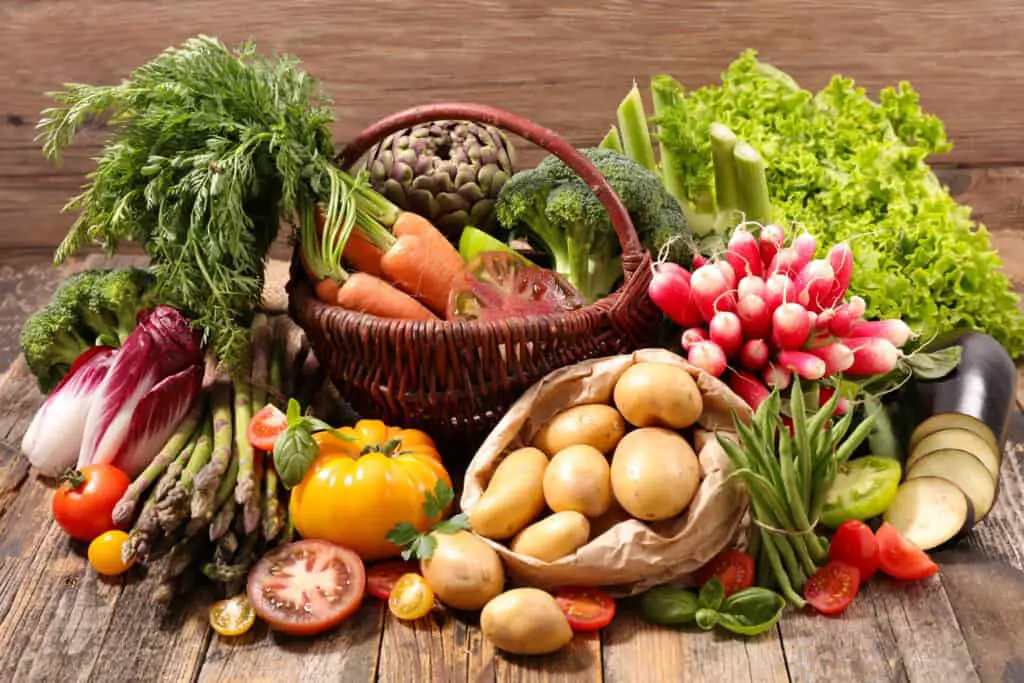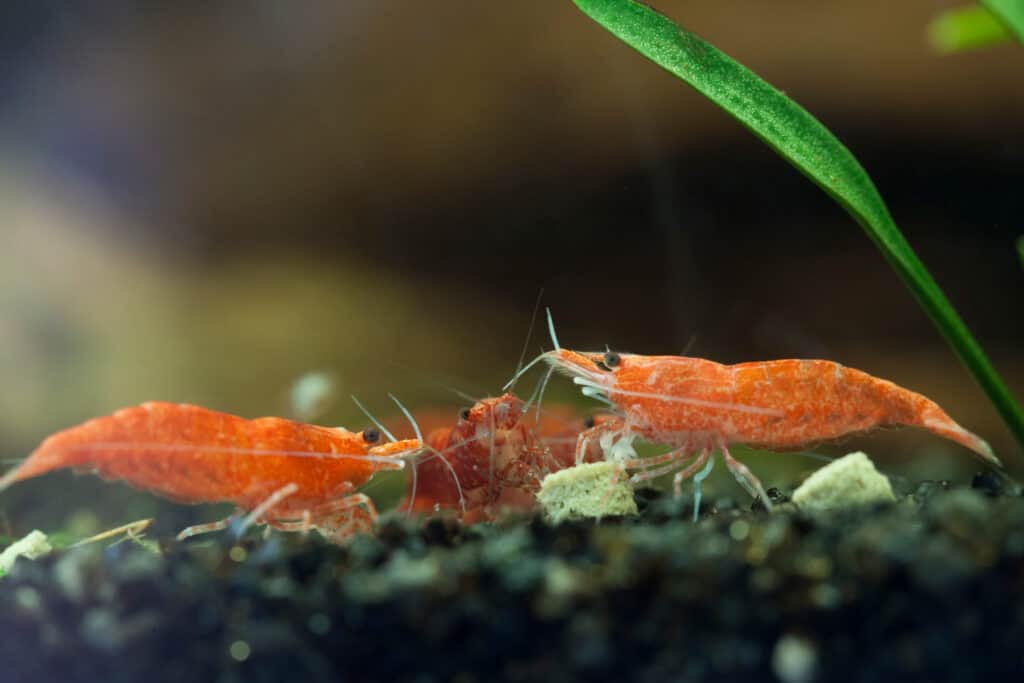
Are you wanting to add variety to your shrimp’s diet, and considering vegetables, but don’t know where to begin?
Vegetables are packed with vitamins, minerals, and essential nutrients that promote excellent shrimp health. They can all assist in increasing the coloration of shrimp, as well as bolster their immunity.
Let’s take a look at these vegetables, and why they should be considered, along with some tips on how to prepare and feed these vegetables.

Best Vegetables For Your Shrimp
Spinach
Spinach is a vegetable rich in iron as well as other essential vitamins and can serve well in an overall balanced shrimp diet.
The nutrients in spinach can support the overall health and well-being of your shrimp.
Zucchini
Filled with Vitamin A and potassium, Zucchini can make a great addition to your shrimp’s diet and is a favorite among shrimp keepers. Zucchini is not only beneficial in the nutrition that it can provide but is also very easily digestible for shrimp.
Cucumber
Besides being predominantly made of water, cucumbers also offer good amounts of vitamins K and C.
Vitamin C is a helpful antioxidant that can assist in removing dangerous substances and in some cases bacteria from shrimp. It can also help increase their tolerance to ammonia.
Carrots
With their orange color and long slender appearance, carrots stand alone. These power veggies are very rich in carotenoid, which is a compound that can help assist in enhancing the color of your shrimp colony.
There are some examples that these carotenoids can alter the coloration of the shrimp, depending on the color of the shrimp. So it is important to experiment and observe the effects of carrots on your shrimp, before making it a permanent addition to their diet.
Carrots also provide good amounts of vitamin A.
Kale
Just like being a powerhouse vegetable for humans, it is also one for shrimp. Kale includes a wide variety of nutrients, including vitamins A, C, and K, while also being a good source of calcium.
Calcium plays a big part in allowing shrimp to have a healthy shell, and to molt correctly.
Broccoli
Another vegetable to try to feed your shrimp is Broccoli. Broccoli provides a great mix of nutrients, including good amounts of vitamins C and K.
Benefits of the Different Nutrients Offered By Vegetables For Your Shrimp
Vitamin A
Vitamin A helps a Shrimp’s immune system, increasing their resistance to infection, and allowing a smooth molting process.
Vitamin A is also beneficial for healthy breeding.
Vitamin C
Acting like an antioxidant, vitamin C can help remove different toxins, and some bacteria from shrimp. It can also help increase their tolerance to ammonia, which is toxic for the shrimp when present in a tank.
Calcium
Calcium assists in the shrimps’ molting process when they outgrow their old shell, as well as keeping their current shells healthy.
Organic vs. Non-Organic Vegetables For Your Shrimp
Pesticides and other chemicals used in vegetable production should be avoided at all costs. This is because they can pose a dangerous risk to your shrimp resulting in poorer health, or even worse.
For this reason, organic vegetables should be opted for whenever possible.
You should also be sure to wash all the vegetables prepared for your shrimp thoroughly to prevent any unwanted particles, or chemicals from entering your tank.

How To Feed Your Shrimp Vegetables
Preparing the vegetables involves first blanching them. This process softens the vegetables, making it easier for the shrimp to break down when feeding.
To blanch them you will place the vegetable in boiling water for 1-3 minutes.
After this time they should be soft enough to feed to the shrimp.
Place a slice or small portion of the chosen vegetable, and place it inside the tank. If the piece does not stay at the bottom, consider wrapping string around the piece and attaching it to a piece of wood, or rock. You may also use weights, like those made for aquarium plants.
It is also important to only leave the pieces of vegetables in for so long, as they will begin to soften in the water which can cloud the water, and will also start to decay which has the potential for spiking nitrate and nitrite levels.
Generally keeping the pieces of vegetable in the tank for a few hours is a good rule of thumb to follow, as it gives plenty of time for the shrimp to feed on it, while not long enough to cause any problems for your water quality. These parameters can vary depending on what vegetable is being used, so experimenting with different vegetables, seeing how long they take to break down in your tank, and how quickly your shrimp feed on them can vary how long they can stay in your tank safely.
Why Feed Vegetables To Shrimp
From the naturally occurring vitamins, minerals, and compounds in vegetables, these options can provide your shrimp with a greater variety in diet and also can benefit them in overall health and coloration.
Many of these vitamins, minerals, and compounds are given as supplemental resources to shrimp, but when incorporating them with the shrimp’s diet you have the opportunity to eliminate those.
Final Thoughts
Be sure to experiment with a variety of vegetables when feeding your shrimp, as each vegetable can provide additional benefits specific to their type.
And just like with humans, your shrimp will have their favorites, so experimenting will give you the ability to observe what your shrimp likes and dislikes.
Remember to also take out the vegetables that are uneaten from the tank to prevent reduced water quality from the vegetables decaying.
With a bit of care, attention, and some experimentation, you will provide your shrimp with an opportunity to be healthier, happier, and more colorful.
